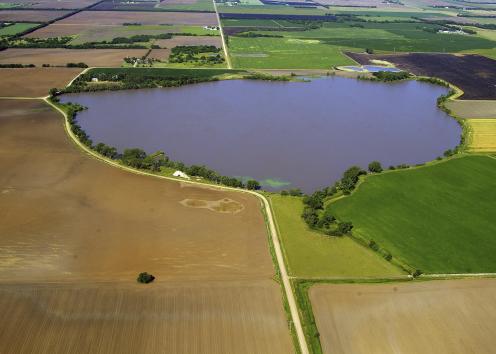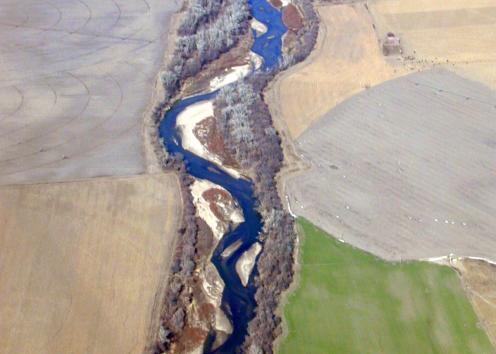Kansas Lakes and Rivers

In eastern Kansas, most water used for drinking, industry, and other purposes comes from surface water sources, mainly larger rivers and lakes. These include the Kansas, Missouri, Cottonwood, and Neosho rivers and constructed reservoirs created by damming rivers. Although western Kansans depend more on groundwater, a few reservoirs have been built in the western half of the state, and many towns grew up along the Arkansas, Smoky Hill, Saline, Republican, and Cimarron rivers and creeks that flow into them.
In much of western Kansas, where surface water was already scarce, river flows dropped in the 20th century following increased water usage for irrigation, cities, and industry. The Arkansas River, which runs from the Rocky Mountains to the Mississippi River, is now almost always dry in western Kansas. The region's creeks are small and often intermittent, only flowing after heavy precipitation.
Natural lakes are rare in Kansas and are much smaller than the state’s reservoirs. The largest natural lake is McPherson County’s Lake Inman in central Kansas. It covers about 160 acres and is on private property. In comparison, the largest reservoir, Milford Lake near Junction City, covers 15,709 acres. It is one of 24 public reservoirs built by the U.S. Army Corps of Engineers and the U.S. Bureau of Reclamation and used for flood control, municipal and industrial water supplies, irrigation, and recreation.
More than 120,000 lakes and ponds throughout Kansas are impoundments—created with artificial barriers, such as dams and dikes. Most are small, private farm ponds less than an acre in size. The larger public lakes include the 24 large reservoirs and more than 580 owned by state and local governments.



